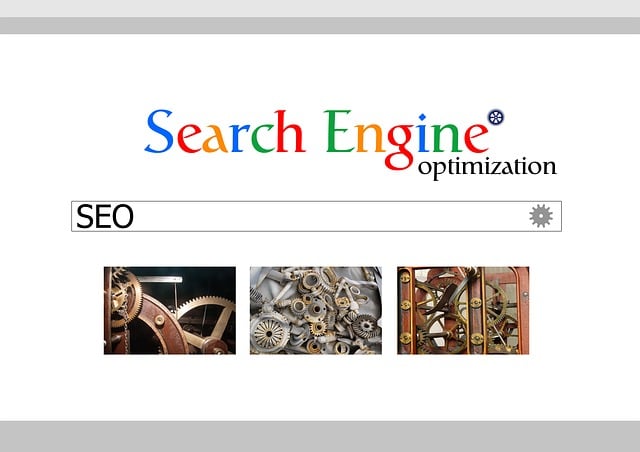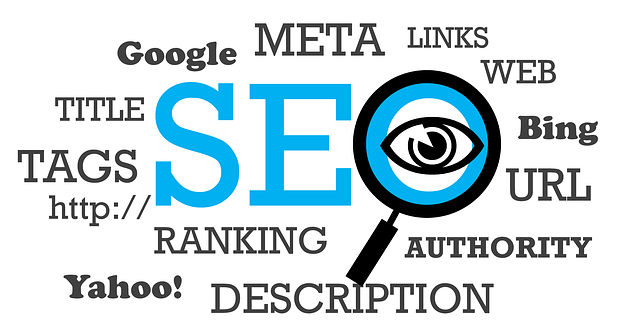User Experience (UX) and Search Engine Optimization (SEO) are intertwined, with UX directly impacting search rankings and user engagement. Optimizing for UX leads to higher satisfaction, reduced bounce rates, increased time spent on site, and organic traffic growth through positive word-of-mouth. SEO enhances UX by optimizing websites for relevant keywords, improving loading times, mobile responsiveness, readability, and navigation, ultimately driving conversions and fostering customer loyalty. Investing in SEO brings numerous advantages, including improved site visibility, higher quality leads, and enhanced user interaction, solidifying its role as a key driver of online success. By balancing keyword inclusion with engaging content, understanding user intent, and implementing technical optimizations, businesses can double their efforts to enhance UX while reaping the benefits of successful SEO strategies.
In today’s digital landscape, where user expectations are higher than ever, Search Engine Optimization (SEO) is not just about ranking; it’s a powerful tool for enhancing User Experience (UX). This article explores the symbiotic relationship between UX and SEO, delving into how optimizing search visibility can create a seamless, intuitive journey for users. We’ll uncover the key benefits of investing in SEO, from improved website usability to content optimization, technical practices, and strategies for continuous improvement, all aimed at elevating both search rankings and user satisfaction.
Understanding User Experience (UX) and its Impact on SEO

User Experience (UX) is a key factor in modern Search Engine Optimization (SEO) strategies, as it directly impacts how search engines rank websites and how users interact with them. UX refers to a user’s overall experience while interacting with a website or application, encompassing ease of use, accessibility, and satisfaction. When a website offers a seamless and enjoyable UX, users are more likely to stay longer, engage with content, and convert into customers or subscribers. This behavior signals to search engines that the site provides value, leading to improved rankings and increased visibility in search results.
In essence, focusing on UX optimization delivers numerous benefits for SEO efforts. It enhances user satisfaction, reduces bounce rates, and encourages higher time spent on page, all of which are considered valuable signals by search algorithms. Moreover, a well-designed UX encourages organic traffic growth as satisfied users share their positive experiences through word-of-mouth recommendations or social media shares, further expanding the site’s reach and authority.
The Role of Search Engine Optimization in Enhancing UX

Search Engine Optimization (SEO) plays a pivotal role in enhancing User Experience (UX), acting as a bridge between users seeking information and the content they need. By optimizing websites for relevant keywords, SEO ensures that when users search for specific terms, the site appears high in search engine results pages (SERPs). This visibility translates into increased organic traffic, higher user engagement, and reduced bounce rates.
The benefits of SEO extend beyond driving more visitors to a site. It also improves UX by making content easily discoverable and accessible. Well-optimized pages load faster, are mobile-friendly, and follow best practices for readability and navigation. This results in users finding what they need quickly, leading to improved satisfaction and a higher likelihood of conversion or repeat visits. In essence, SEO is not just about attracting more visitors; it’s about making sure those visitors have a seamless and rewarding experience on the site.
Key Benefits of Investing in SEO for Better UX

Investing in Search Engine Optimization (SEO) is a strategic move that offers numerous advantages for businesses aiming to enhance their user experience (UX). By optimizing web content and structures, SEO directly impacts how users interact with a website. When search engines like Google rank sites higher for relevant keywords, it drives organic traffic, increasing visibility and reach. This influx of targeted visitors means better-quality leads, as these individuals are actively searching for products or services related to what your business offers.
Moreover, effective SEO practices lead to improved site navigation, faster loading times, and mobile optimization. These technical aspects contribute to a seamless UX, encouraging users to explore more pages and interact longer. As search engines prioritize user-friendly websites, maintaining high SEO standards ensures that your site remains competitive in the digital landscape. Ultimately, by focusing on the benefits of SEO, businesses can foster stronger connections with their audience, leading to increased customer satisfaction and loyalty.
How SEO Improves Website Usability and Navigation

Search Engine Optimization (SEO) significantly enhances website usability and navigation, making it easier for users to find the information they seek. By optimizing content with relevant keywords, meta tags, and structured data, SEO ensures that websites appear in search engine results for queries related to their offerings. This visibility drives organic traffic, increasing the chances of potential customers discovering the site without relying on paid advertising.
Moreover, effective SEO improves navigation by creating a clear and intuitive user experience. Well-optimized pages load quickly, have consistent formatting, and utilize internal linking structures that guide users through the website. These features not only make it easier for visitors to browse but also encourage them to stay longer, reducing bounce rates and improving key performance indicators (KPIs). Ultimately, a usable and navigable website fosters better user engagement and conversions, underscoring the essential role of SEO in delivering an enhanced overall experience.
Optimizing Content for Both Search Engines and Users

Optimizing content isn’t just about pleasing search algorithms; it’s a dual-purpose strategy that enhances both user experience and boosts SEO rankings. To achieve this, content creators must strike a delicate balance between incorporating relevant keywords and crafting text that reads naturally and engages users. By understanding user intent behind searches, you can tailor your content to provide answers or solutions directly, thereby increasing the likelihood of conversions and reducing bounce rates.
This approach involves more than just keyword stuffing. It requires a deep dive into what your target audience is seeking and delivering content that goes beyond meeting expectations. Well-optimized content not only improves user satisfaction but also encourages longer visits, lower bounce rates, and higher click-through rates—all of which are strong signals to search engines that your website offers valuable information. In essence, enhancing user experience through content optimization is a win-win strategy that magnifies the benefits of Search Engine Optimization.
Technical SEO Practices for a Seamless User Journey

In the realm of Search Engine Optimization (SEO), Technical SEO practices are pivotal for creating a seamless user journey. From optimizing site speed and ensuring mobile-friendliness to implementing structured data markup, these strategies directly impact how search engines crawl and index your website. By addressing technical hurdles, you enhance page loading times, improve accessibility across devices, and make it easier for search algorithms to understand and present your content effectively. The benefits of these practices extend beyond the backend, as they contribute to a user-centric experience that keeps visitors engaged and encourages them to explore more of your site.
Furthermore, Technical SEO plays a critical role in ensuring your website’s resilience to changes in search engine algorithms. Regularly updating sitemaps, fixing broken links, and implementing secure connections (HTTPS) are essential steps in maintaining a healthy online presence. These measures not only protect against potential ranking penalties but also position your site as a reliable resource for users, fostering trust and encouraging longer visits. Ultimately, the synergy between Technical SEO and User Experience (UX) is what drives successful online businesses, making it an integral component of any comprehensive SEO strategy.
Measuring Success: Evaluating the Impact of SEO on UX

Measuring Success: Evaluating the Impact of SEO on UX
The true power of Search Engine Optimization (SEO) lies in its ability to transform user experiences, driving organic traffic and fostering engagement. By implementing effective SEO strategies, businesses can ensure their websites appear prominently in search results, attracting a steady stream of qualified visitors. However, the benefits extend far beyond increased visibility; they directly influence user satisfaction and behavior. Key performance indicators (KPIs) such as click-through rates, average session duration, bounce rate, and conversion metrics provide valuable insights into the impact of SEO on UX.
For instance, a well-optimized website might see higher rankings for relevant keywords, leading to more users finding what they’re looking for promptly. This results in reduced frustration and increased likelihood of positive interactions. Moreover, SEO contributes to enhanced accessibility by improving site structure and content readability, making websites usable for a broader audience. Ultimately, these improvements translate into better UX, fostering user loyalty and boosting business growth.
Strategies to Continuously Improve SEO and UX

To continuously improve SEO and UX, businesses must adopt a dynamic approach that combines data-driven insights with user-centric design. Regularly reviewing website analytics can reveal valuable information about visitor behavior, enabling optimizations to enhance both search engine rankings and overall user satisfaction. For instance, identifying pages with high bounce rates or low time spent on page can guide content updates or layout adjustments to create a more engaging experience.
Additionally, staying abreast of industry trends and algorithm updates from major search engines is paramount. The benefits of Search Engine Optimization extend beyond increased visibility; it also ensures that your website remains relevant and aligned with user expectations. By integrating new features like voice search capabilities or optimizing for mobile usability, you can deliver a superior UX while capitalizing on the latest SEO practices.
